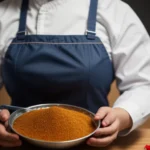Arab cuisine is renowned for its rich and diverse flavors, with a wide range of traditional dishes that have been passed down through generations. From mouth-watering kebabs to fragrant rice dishes and hearty stews, Arab cuisine offers a truly unique culinary experience. In this ultimate guide, we will explore some of the most popular traditional Arab dishes and share tips on how to recreate them in your own kitchen.
1. Introduction to Arab Cuisine
Arab cuisine is a reflection of the region’s diverse history and culture, with influences from various countries and civilizations. The cuisine is characterized by the use of aromatic spices, fresh herbs, and a variety of meats, grains, and vegetables. Traditional Arab dishes are often cooked slowly over low heat to enhance the flavors and create a rich, hearty meal.
2. Popular Ingredients in Arab Cuisine
Some of the key ingredients in traditional Arab dishes include lamb, chicken, and beef, as well as rice, lentils, chickpeas, and a variety of fresh vegetables such as tomatoes, eggplant, and zucchini. Aromatic spices like cumin, coriander, cinnamon, and cardamom are also commonly used to add depth and flavor to dishes.
3. Mezze – The Arab Appetizer
Mezze is a popular appetizer in Arab cuisine, featuring a variety of small dishes that are served before the main meal. Mezze dishes can include hummus, tabbouleh, baba ghanoush, falafel, and stuffed grape leaves. These dishes are perfect for sharing and are a great way to start a meal.
4. Kebabs – The Grilled Delight
Kebabs are a staple of Arab cuisine, featuring skewers of marinated meat that are grilled to perfection. Popular choices include lamb, chicken, and beef kebabs, which are often seasoned with a blend of spices and served with grilled vegetables or rice. Kebabs are a favorite choice for a quick and tasty meal.
5. Shawarma – The Middle Eastern Wrap
Shawarma is a popular street food in the Middle East, featuring thinly sliced layers of marinated meat (usually lamb, chicken, or beef) that are stacked on a vertical spit and roasted slowly. The meat is then shaved off and served in a pita bread with tahini sauce, pickles, and vegetables. Shawarma is a flavorful and satisfying option for a quick and delicious meal.
6. Rice Dishes – Aromatic and Flavorful
Rice is a staple in Arab cuisine, with many dishes featuring fragrant and flavorful rice that is cooked with spices, herbs, and a variety of ingredients. Popular rice dishes include biryani, kabsa, and maqluba, which are often served with meat, vegetables, and nuts. These dishes are a delicious and filling option for a hearty meal.

7. Kofta – The Flavorful Meatballs
Kofta is a popular dish in Arab cuisine, featuring seasoned ground meat (usually lamb or beef) that is shaped into meatballs or patties and grilled or fried. Kofta is often served with rice, salad, or pita bread and can be enjoyed as a main dish or as an appetizer. The flavorful spices in kofta make it a favorite choice for meat lovers.
8. Falafel – The Crispy Chickpea Fritters
Falafel is a popular dish in Arab cuisine, featuring deep-fried balls or patties made from ground chickpeas, herbs, and spices. Falafel is often served in pita bread with tahini sauce, pickles, and vegetables, making it a delicious and satisfying meal. Falafel is a popular street food and is enjoyed by vegetarians and meat lovers alike.
9. Ful Medames – The Egyptian Breakfast Staple
Ful medames is a popular breakfast dish in Egypt, featuring cooked fava beans that are seasoned with spices, herbs, and olive oil. Ful medames is often served with boiled eggs, tomatoes, cucumbers, and pita bread, making it a nutritious and hearty meal to start the day. This dish is a favorite choice for those looking for a healthy and flavorful breakfast.
10. Tagine – The Moroccan Stew
Tagine is a traditional Moroccan stew that is cooked in a clay pot with a conical lid, which helps to trap moisture and create a tender and flavorful dish. Tagine can feature a variety of ingredients such as lamb, chicken, beef, vegetables, and dried fruits, all cooked in a delicious blend of spices and herbs. Tagine is a comforting and aromatic stew that is perfect for a cozy meal.
11. Baklava – The Sweet Treat
Baklava is a popular dessert in Arab cuisine, featuring layers of phyllo dough, nuts, and syrup that are baked to create a sweet and crunchy pastry. Baklava is often flavored with rose water or orange blossom water, giving it a fragrant and delicate flavor. This indulgent dessert is perfect for special occasions and celebrations.
12. Moutabel – The Creamy Eggplant Dip
Moutabel is a popular dip in Arab cuisine, featuring roasted eggplant that is mashed and mixed with tahini, garlic, lemon juice, and spices. Moutabel is similar to baba ghanoush but has a creamier texture and a smoky flavor from the roasted eggplant. This dip is perfect for serving with pita bread, vegetables, or kebabs.
13. Ma’amoul – The Festive Pastry
Ma’amoul is a popular pastry in Arab cuisine, featuring a delicate shortbread crust that is filled with dates, nuts, or sweetened semolina. Ma’amoul is often shaped into intricate designs using special molds and is traditionally served during holidays and special occasions. This sweet and fragrant pastry is a delicious treat to enjoy with tea or coffee.
14. Kunafa – The Creamy Pastry
Kunafa is a popular dessert in Arab cuisine, featuring layers of shredded phyllo dough that are filled with cheese, nuts, or sweetened cream and soaked in a sugar syrup. Kunafa is baked until golden and crispy, creating a delicious and indulgent pastry with a creamy and sweet filling. This dessert is a favorite choice for those with a sweet tooth.
15. Conclusion
Arab cuisine offers a rich and diverse culinary experience, with a wide range of traditional dishes that are full of flavor and history. From mezze and kebabs to rice dishes and stews, Arab cuisine has something to offer every palate. By exploring and recreating these traditional dishes in your own kitchen, you can enjoy the unique and delicious flavors of Arab cuisine. So next time you’re looking for a flavorful and satisfying meal, consider trying one of these traditional Arab dishes for a truly unforgettable dining experience.
FAQs about “The Ultimate Guide to Traditional Arab Dishes”
- What makes “The Ultimate Guide to Traditional Arab Dishes” a must-have for culinary enthusiasts? “The Ultimate Guide to Traditional Arab Dishes” offers a comprehensive exploration of the diverse and rich culinary heritage of Arab cuisine. It provides detailed insights into traditional Arab dishes, their cultural significance, and the techniques required to prepare them authentically.
- Which types of dishes are covered in this guide? This guide covers a wide range of traditional Arab dishes, including classics such as hummus, falafel, tabbouleh, shawarma, kabsa, baklava, and more. Each dish is accompanied by in-depth information about its origins, ingredients, and variations across different Arab regions.
- Are the recipes in “The Ultimate Guide to Traditional Arab Dishes” suitable for home cooks of all skill levels? Yes, “The Ultimate Guide to Traditional Arab Dishes” caters to cooks of all skill levels, with recipes that range from simple and beginner-friendly to more complex and elaborate. Whether you’re new to Arab cooking or an experienced chef, you’ll find recipes that are accessible and easy to follow.
- How does this guide showcase the diversity of Arab cuisine? This guide celebrates the diversity of Arab cuisine by highlighting dishes from various countries and regions across the Arab world. From the Levant to the Gulf, readers will discover the unique flavors, ingredients, and cooking techniques that characterize Arab culinary traditions.
- Can readers expect to learn about the cultural and historical background of Arab dishes in this guide? Absolutely! “The Ultimate Guide to Traditional Arab Dishes” delves into the cultural and historical context of Arab cuisine, exploring its roots, influences, and evolution over time. Readers will gain insights into the cultural significance of food in Arab society, as well as the traditions and customs associated with Arab cooking and dining.
Advantages:
- Comprehensive coverage: The title suggests a thorough exploration of traditional Arab dishes, providing readers with a comprehensive guide to the diverse culinary traditions of the Arab world.
- Cultural immersion: Readers can expect to learn about the cultural significance and historical context of traditional Arab dishes, gaining insights into the rich culinary heritage of the region.
- Gastronomic education: The title promises readers an opportunity to deepen their understanding of Arab cuisine, learning about the ingredients, techniques, and traditions that define traditional Arab cooking.
- Practicality: By positioning itself as the ultimate guide, the title aims to be a valuable resource for readers interested in exploring Arab cuisine, offering them a one-stop reference for traditional dishes.
- Inspiration for cooking: The title may inspire readers to try cooking traditional Arab dishes at home, providing them with recipes, tips, and techniques to recreate the flavors of the Arab world in their own kitchens.
Disadvantages:
- Generalization: The term “traditional Arab dishes” encompasses a wide range of culinary traditions across various countries and regions, potentially oversimplifying the diversity within Arab cuisine.
- Lack of specificity: The title does not specify which dishes will be covered or which regions of the Arab world will be included, leaving readers uncertain about the scope of the content.
- Potential cultural appropriation: Without proper context and understanding, exploring Arab cuisine could risk appropriating cultural elements without acknowledging their significance.
- Accessibility of ingredients: Some traditional Arab dishes may require specific ingredients that are difficult to find outside of the Arab world or major culinary hubs, limiting the practicality of the recipes for some readers.
- Dietary restrictions: Arab cuisine often includes ingredients like meat, dairy, and grains, which may not be suitable for individuals with dietary restrictions or preferences, potentially alienating some readers.
















